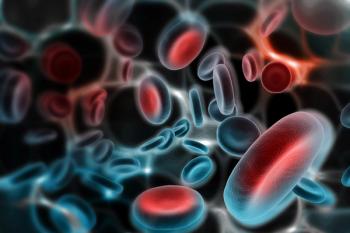
Vemurafenib Plus Rituximab Produced Durable Responses in Relapsed or Refractory Hairy-Cell Leukemia
A phase 2 trial evaluated the combination of vemurafenib plus rituximab, which produced a complete response in 87% of the evaluable patients with hairy-cell leukemia.
Vemurafenib (Zelboraf) plus rituximab (Rituxan) to treat patients with relapsed or refractory hairy-cell leukemia (HCL) was associated with durable complete responses, according to data published in The New England Journal of Medicine.
The phase 2, single-center trial examined the safety and efficacy of the chemotherapy-free, nonmyelotoxic regimen of vemurafenib in combination with rituximab and met the primary end point of complete response at the end of treatment.
“In this study, we found that vemurafenib plus rituximab was a short and safe treatment that was capable of rapidly inducing a deep and durable complete response in the majority of patients with refractory or relapsed HCL,” wrote the investigators.
The treatment regimen consisted of 960 mg of vemurafenib administered twice daily for 8 weeks plus 375 mg per square meter of body-surface area of rituximab administered concurrently and sequentially for 8 doses over a period of 18 weeks.
The academic trial enrolled 30 patients with HCL who received a median of 3 prior therapies (range, 1-14). In the intention-to-treat population, 26 patients (87%) experienced a complete response (P = .005). Included in these complete responses were 15 patients who were refractory to chemotherapy (n = 10) or rituximab (n = 5) as well as 7 patients previously treated with BRAF inhibitors.
Minimal residual disease (MRD) was also cleared in 17 of the 26 patients (65%) who experienced a complete response. Relapse-free survival at a median follow-up of 34 months among these patients with a response was 85% (range, 13 to 50).
Looking at the full patient population, the progression-free survival rate at a median follow-up of 37 months (range, 0.5 to 54.5) was 78%.
“This study showed that vemurafenib plus rituximab was a short chemotherapy-free regimen that was active in patients in whom treatment with purine analogues had failed,” wrote the investigators. “Owing to the absence of myelotoxic effects, this combination may also be helpful with regard to delivering a definitive treatment in contexts in which highly immunosuppressive chemotherapy is contraindicated, such as in patients who have active infections or are at risk for coronavirus disease 2019.”
The toxic effects observed in this trial were consistent with those previously reported with these treatment options. Vemurafenib-related toxic effects included cutaneous rash, photosensitivity, warts, fever, hyperkeratosis, arthralgias or arthritis, fatigue, alopecia, and nausea or dyspepsia.
Along with the primary end point of complete response, key end points for the research also included time to response, MRD status, progression-free survival, relapse-free survival, MRD-free survival, and safety.
Moving forward, the investigative team suggests a randomized comparison of vemurafenib plus rituximab compared with chemotherapy-based standard of care is needed to assess the potential to produce similar efficacy data while lower toxicity.
Reference:
Tiacci E, De Carolis L, Simonetti E, et al. Vemurafenib plus Rituximab in Refractory or Relapsed Hairy-Cell Leukemia. N Engl J Med. 2021;384(19):1810-1823. doi:10.1056/NEJMoa2031298
Newsletter
Stay up to date on recent advances in the multidisciplinary approach to cancer.


















































































